Gardener’s Soap Recipe (Pumice + Calendula)
With the addition of natural ingredients like chia seeds, ground pumice, and dried calendula flowers, and the refreshing scent of clary sage essential oil, this soap is a luxurious treat for your hands. Makes a lovely gift.
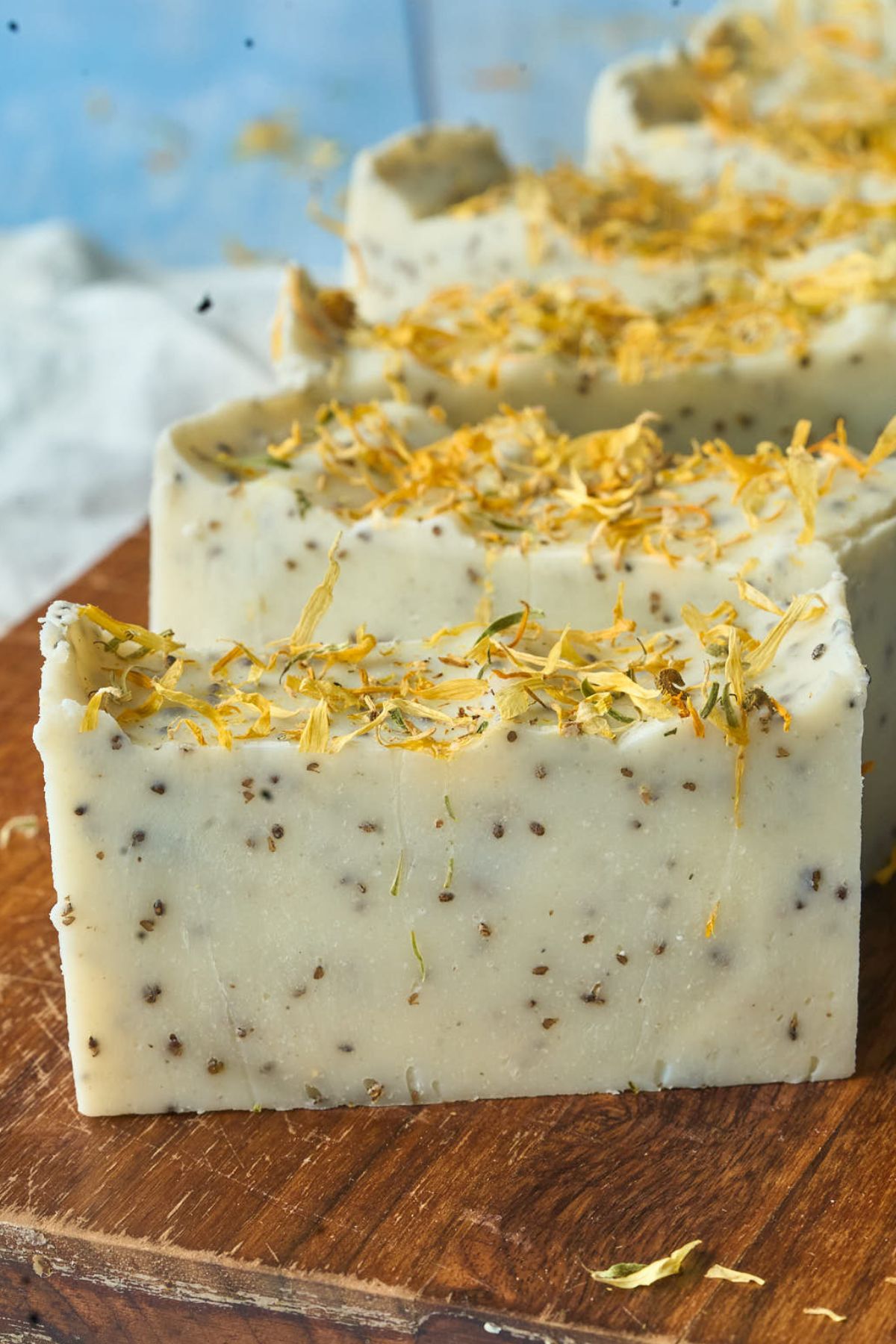
Table of contents
new to soapmaking? please read this beginner’s guide first and/ or watch the video
❤️ Why you’ll love this recipe
- Exfoliating and Moisturizing: This soap recipe contains natural exfoliants like chia seeds and ground pumice, which can help remove dead skin cells and leave your hands feeling soft and smooth. The addition of shea butter and olive oil helps to moisturize and nourish your skin.
- Refreshing Scent: The clary sage essential oil in this soap gives it a refreshing, herbal scent that can help to invigorate your senses. It’s a great way to start your day or refresh your hands after a long day in the garden.
- Natural Ingredients: This soap recipe is made with great ingredients like olive oil, shea butter, and beeswax. It’s a great option for those looking for a natural and eco-friendly soap that’s gentle on their skin.
🧂 Ingredients
This is an overview of the ingredients. You’ll find the full measurements and instructions in the printable recipe at the bottom of the page.
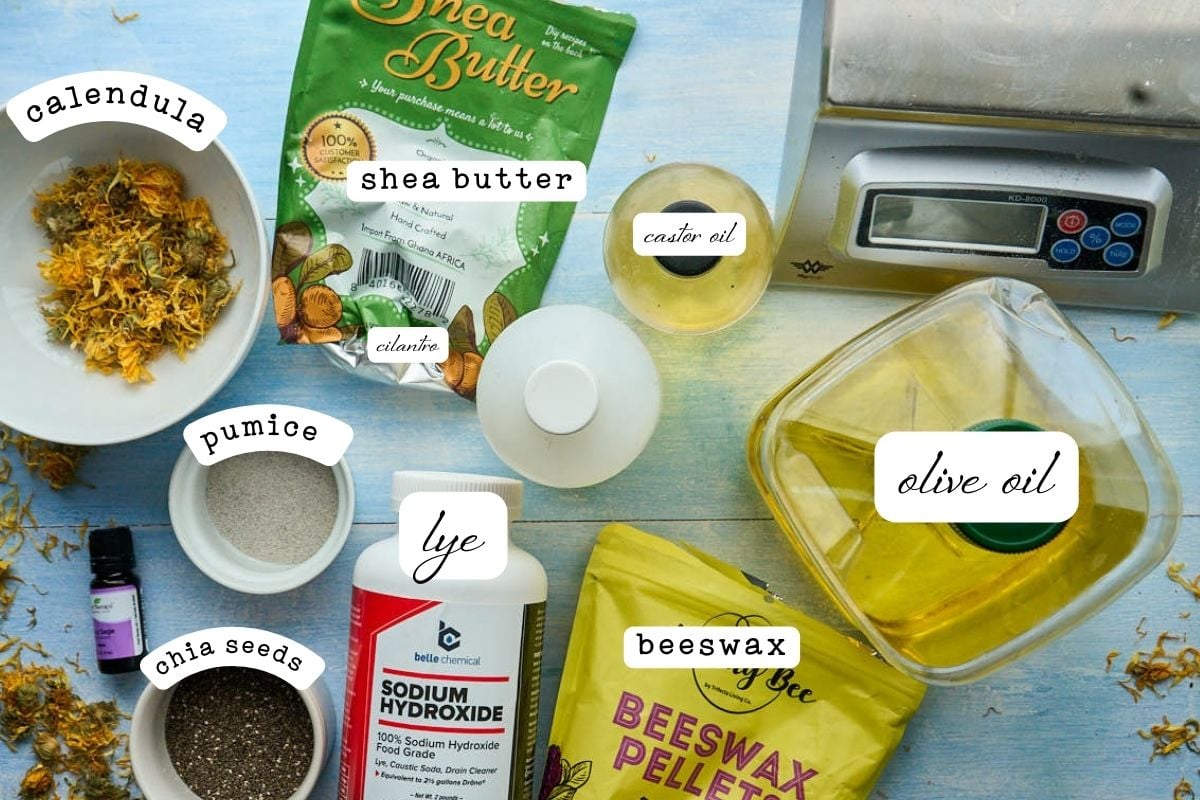
You’ll need the following for this cold process recipe:
- water
- lye
- coconut oil
- olive oil
- castor oil
- shea butter
- beeswax
- chia seeds
- ground pumice
- clary sage essential oil
- dried calendula flowers
🥣 Equipment
- Stick blender
- digital scale
- Safety gear
🍴Instructions
Step One: Mix the Lye and Water
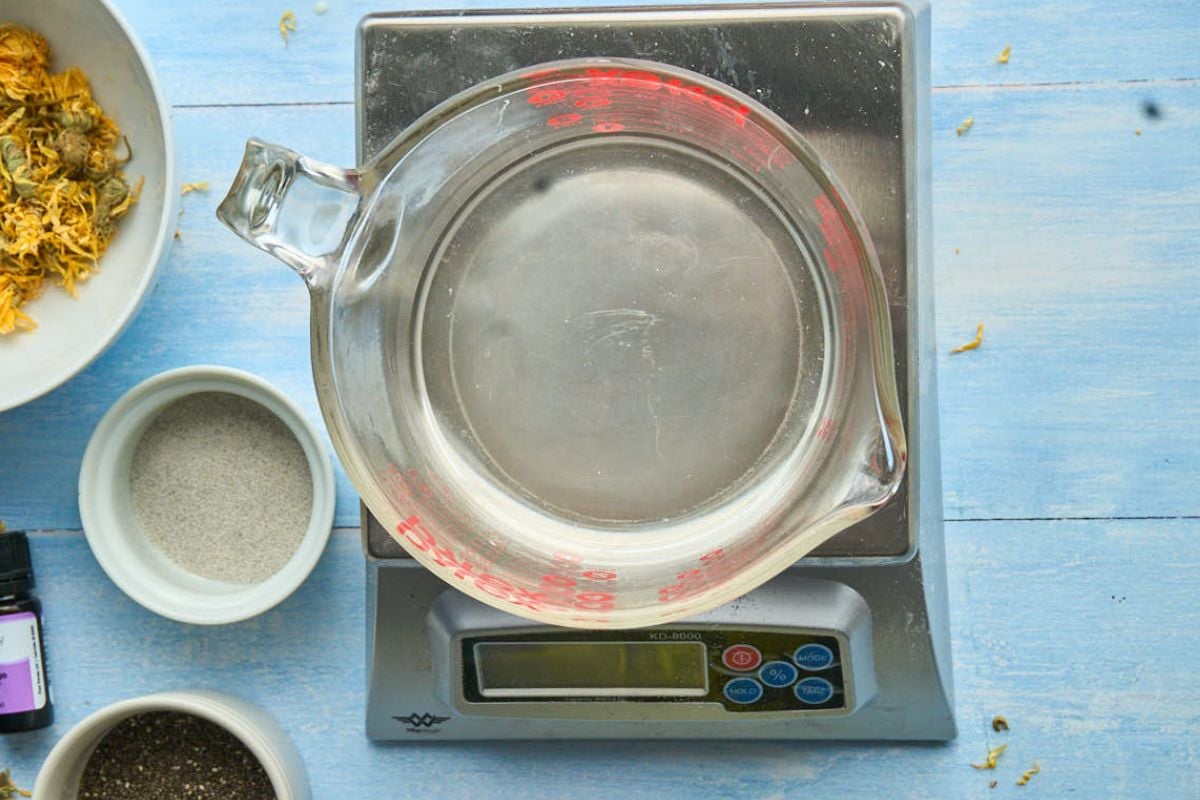
In a well-ventilated area, carefully add 3.62 ounces of lye to 8 ounces of water. Stir the mixture until the lye is fully dissolved. The lye solution will become hot and may release fumes, so it’s important to be careful and wear appropriate safety gear.
Step Two: Melt the Oils and Butters
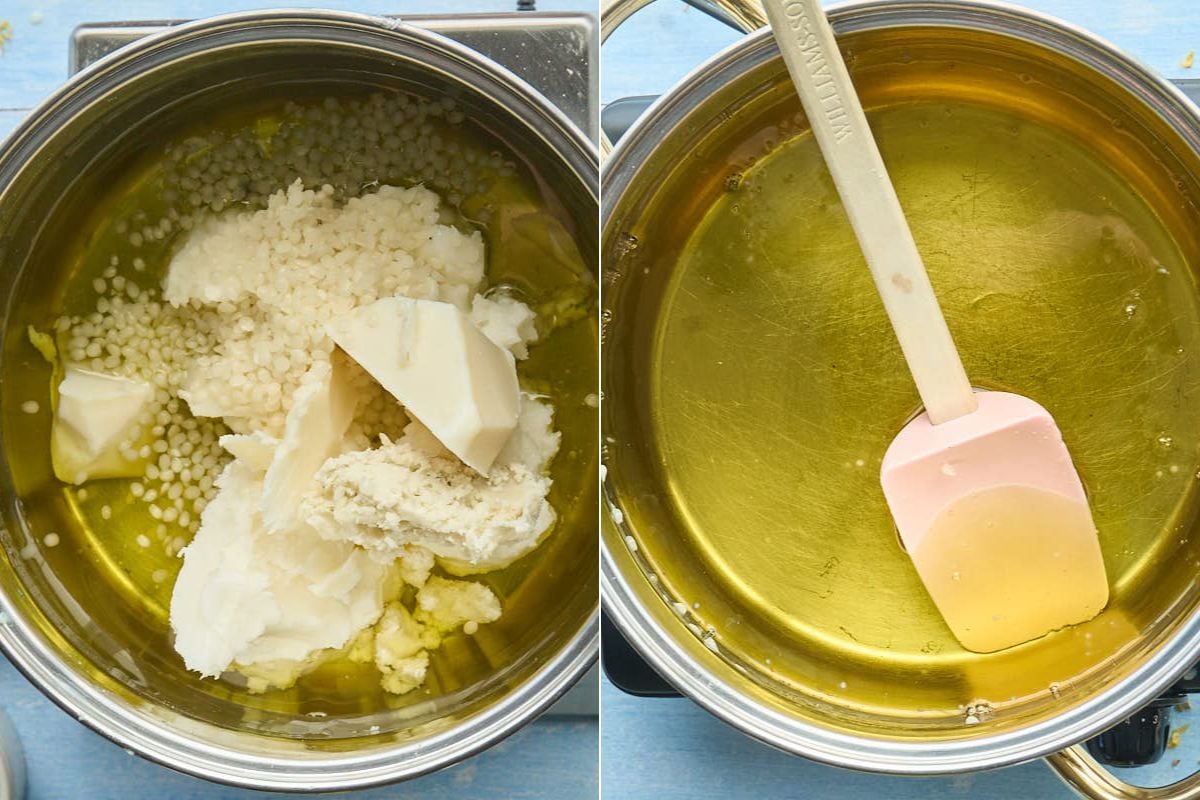
In a large pot, melt 9 ounces of coconut oil, 10 ounces of olive oil, 2 ounces of castor oil, 4 ounces of shea butter, and 1 ounce of beeswax over medium-low heat. Stir the mixture occasionally until the beeswax is fully melted.
Step three: Cool the Lye Solution and Oil Mixture

Set both the lye solution and oil mixture aside to cool. You want them to reach a temperature of around 100-115 degrees Fahrenheit before blending.
Step Four: Stick Blend to Trace
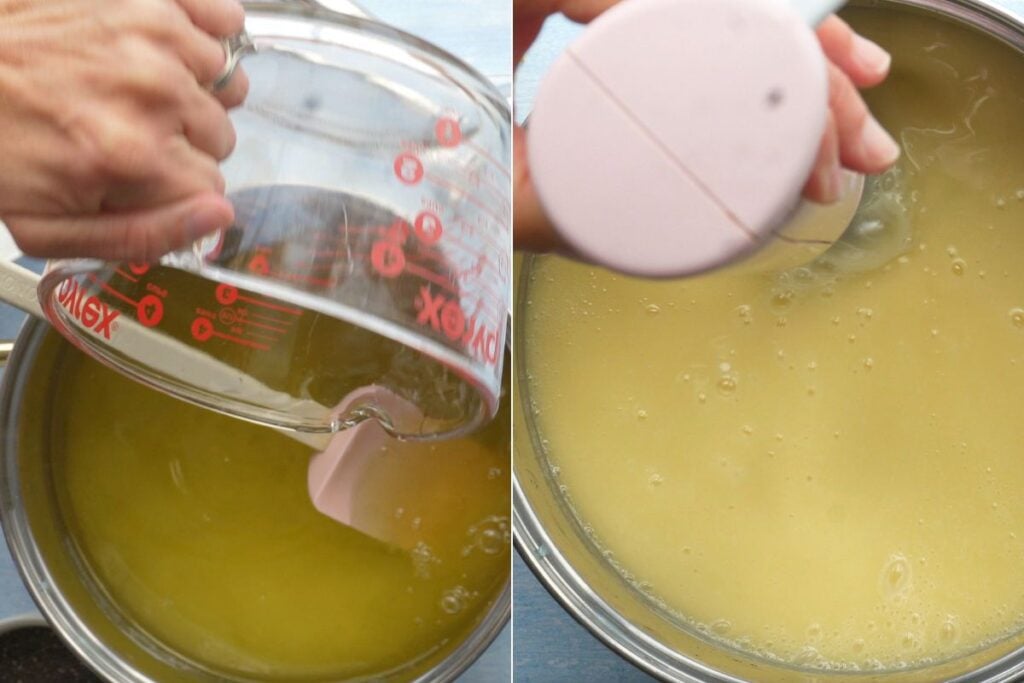
Once both mixtures have cooled, pour the lye solution into the pot with the oils and blend using a stick blender until you reach trace. Trace is when the soap mixture has thickened enough to leave a visible trail when you drizzle it over the surface.
Step Five: Add Exfoliants and Fragrances
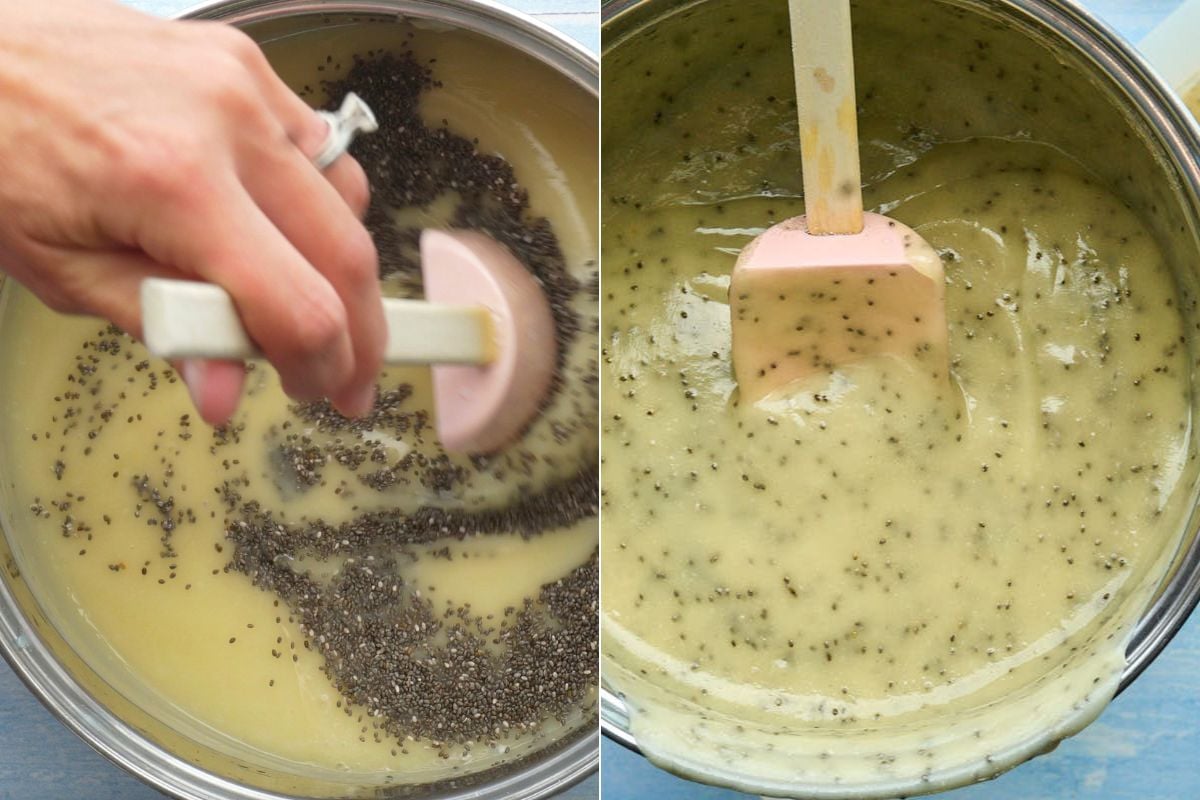
Add 2 tablespoons of chia seeds, 2 tablespoons of ground pumice, 1 tablespoon of dried calendula flowers, and 1 tablespoon of clary sage essential oil to the soap mixture once you reach trace. You can substitute the clary sage essential oil for your preferred fragrance oil if desired.
Step six: Pour the Soap Mixture into the Mold
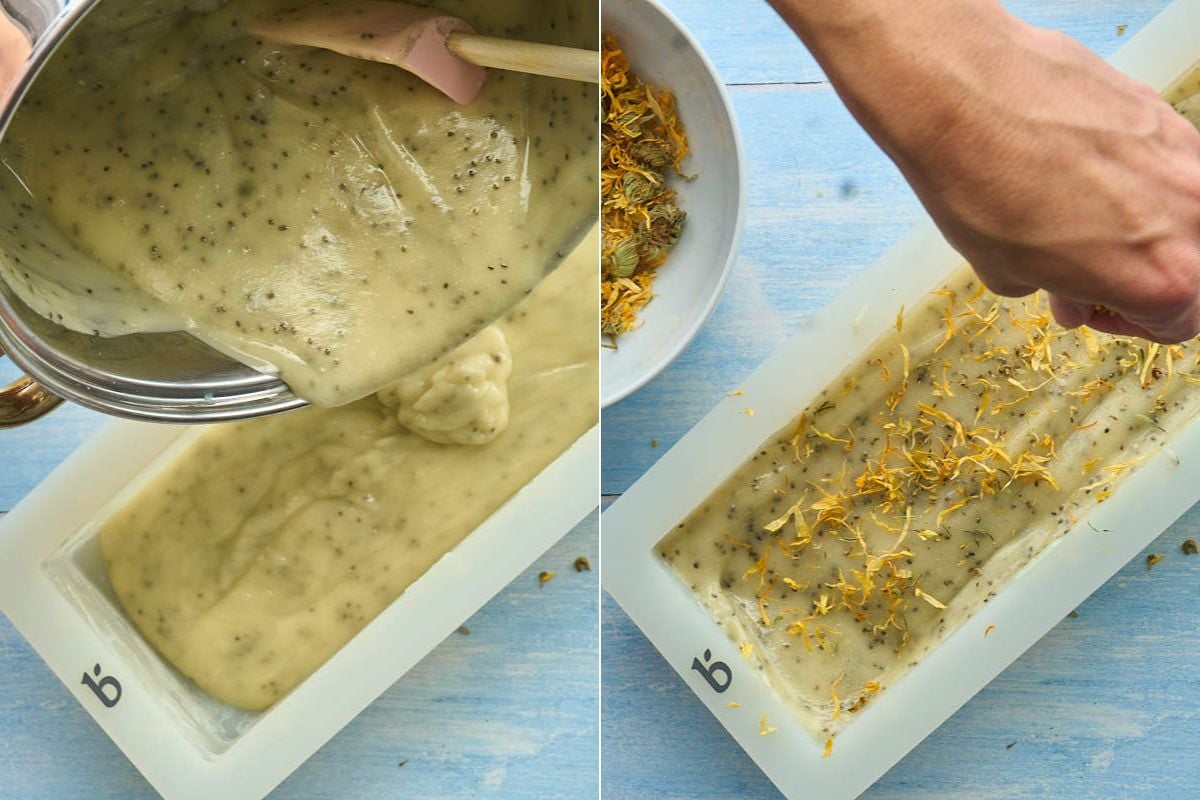
Once you’ve added the exfoliants and fragrance, quickly pour the soap mixture into the mold. Smooth out the surface with a spatula or spoon.
Step seven: Cure and Unmold

Allow the soap to cure in the mold for 24-48 hours before carefully removing it. Slice the soap into bars and allow it to cure for at least 3 weeks before using. Store the bars in a well-ventilated place to allow them to fully cure.
🥫 Storage instructions
To prevent your soap from melting or becoming too soft, store it in a cool, dry place.
Homemade soap needs time to cure, which means that excess moisture needs to evaporate out of the bars. Allow your soap to cure for at least 3-4 weeks before using or storing it. This will also help the soap become harder and last longer.
🔍 FAQs
Properly cured and stored homemade soap can last for several months or even years.
Yes, you can use any fragrance oil that you prefer. Just be sure to follow the manufacturer’s instructions for usage rates.
Yes it’s fine to leave them out if you prefer a smoother soap. Keep in mind that the soap will still be effective at cleaning your hands, but it won’t have the same exfoliating properties.
Yes, you can experiment with different oils to achieve different properties in your soap. However, changing any oils makes this your own, new recipe. You will need to use a soap calculator to see if the lye amount changes. If you aren’t comfortable with that, stick to the recipe as written.
📘 Related Recipes
👩🔬 Expert tips
- Safety First: Before you start making soap, it’s important to take necessary safety precautions. Wear gloves, long-sleeved shirts, and eye protection when working with lye. Keep vinegar or another neutralizing agent nearby in case of accidental skin contact with lye. Always work in a well-ventilated area and keep children and pets away from your workstation.
- Accurate Measurements: Soap making is a precise process that requires accurate measurements of ingredients. Use a digital scale to weigh the ingredients in the recipe, as using volume measurements can lead to inconsistent results.
- Lye Solution: When mixing the lye and water, always add the lye to the water, never the other way around. Stir the mixture until the lye is fully dissolved and set it aside to cool.
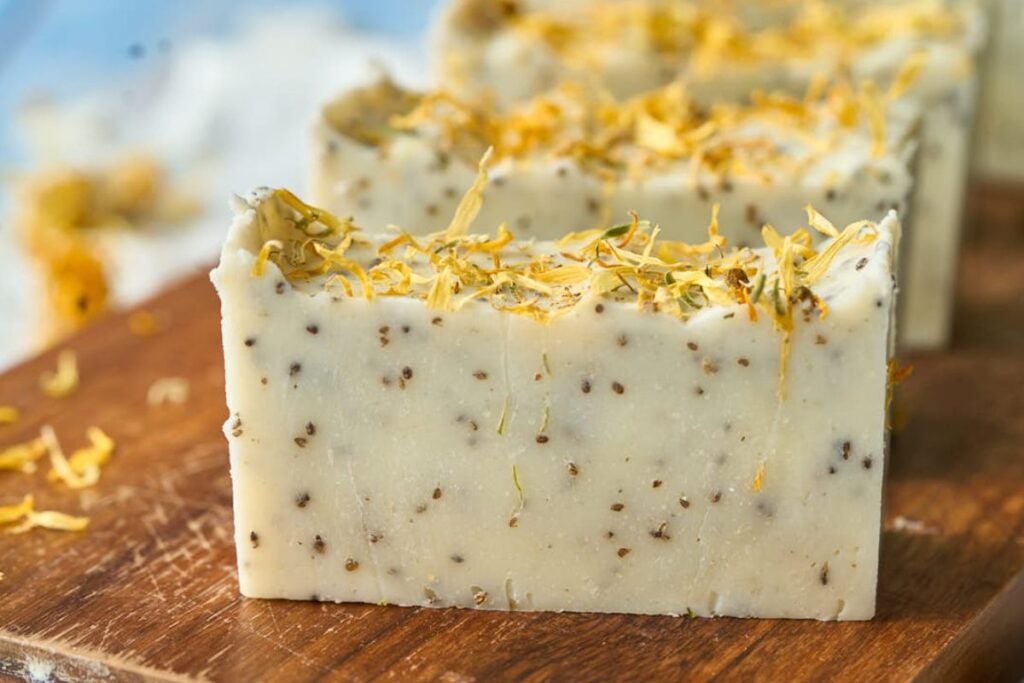
📖 Here’s the recipe
Gardener’s Soap Recipe
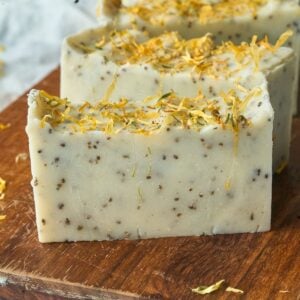
Equipment
- Safety gear
Ingredients
- 8 ounces water
- 3.62 ounces lye
- 9 ounces coconut oil
- 10 ounces olive oil
- 2 ounces castor oil
- 4 ounces shea butter
- 1 ounce beeswax
- 2 tablespoons chia seeds
- 2 tablespoon ground pumice
- 1 tablespoon clary sage essential oil
- 1 tablespoon dried calendula flowers
Save This Recipe
You'll join my email list which you will love. And if you don't, unsubscribe in one click. ❤️
Instructions
- Mix the lye and water. Carefully add the lye to the water and stir until it is fully dissolved. The liquid will shoot up in temperature. Set aside to cool in a safe place.
- Melt the oil and butters. Measure the oils separately, then combine them in a large pot. Melt the over medium-low heat until the beeswax is fully melted. Set aside to cool.
- Stick blend to trace. Once the lye water and oils have both cooled to about 100-115 degrees, it's time to blend. Get out your soap mold, exfoliating additions, and any fragrance or color you'd like to add. Pour the lye water into the pot with the oils and blend with your stick blender until you reach trace. Add fragrance and color if using, and quickly pour into the soap mold.
- Cure and unmold. Allow the soap to cure in the mold for 24-48 hours, then carefully remove it. Slice into bars. Store in a well-ventilated place and let it cure more for at least 3 weeks before using.
Video
Notes
Did You Make This?
I would love it if you would leave a review!Love,











Hi Katie, this soap sounds wonderful. I have to copy and paste when wanting to print out any of your recipes. If I don’t I get all kinds of ads printed along with the recipe.
Is there a way this can be fixed?
Thank you
Deborah
deborah the ads will show in the print “view” on your screen but when you actually print it they will not be on the page! You also can toggle off the photo to save ink.